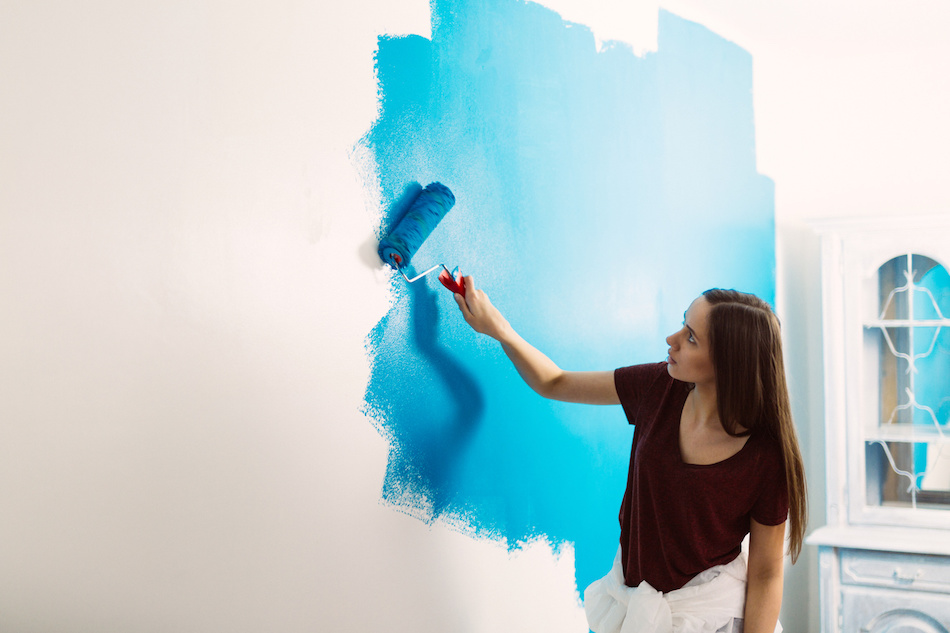The Do's and Don'ts of Painting Before Selling Your Home
Posted by Edmonton Homes.ca on Thursday, September 7th, 2017 at 7:59am.
 Scuffed walls can make a home look a little worn and dark, which is why many home sellers often think about painting their home before putting it on the market. These tips will help you through the painting process, so that your home's new interior paint appeals to the most buyers and helps to boost your Summerside home's property value.
Scuffed walls can make a home look a little worn and dark, which is why many home sellers often think about painting their home before putting it on the market. These tips will help you through the painting process, so that your home's new interior paint appeals to the most buyers and helps to boost your Summerside home's property value.
Do: Pick A Neutral Colour
Neutrals like brown, cream, white and gray, may not be exciting, but they're easy to live with and can match a range of different furniture types. Painting your home's interior in neutral colours is a good way to appeal to a wide variety of buyers.
To make painting your home's interior easy, pick one colour and paint that colour in every room. Beige, cream or gray are all acceptable shades that can be fit to nearly every room of the house. If you're determined to paint your home in different colours for every room, choose cool colours for the bedroom (like gray, or gray-blue) and paint the living room in a warm neutral (like beige). Avoid heavy presence of white in the home, as this colour can be harsh, sanitized and lacking in personality.
Do: Avoid Dark Colours
Dark rooms can look claustrophobic, cramped and depressing. Buyers respond well to light, bright rooms that appear to be airy and spacious. To avoid problems, choose lighter hues when picking a colour for your home. If you're not sure how dark a colour will look when it's applied to the walls, buy paint samples before committing to a shade. Doing this will help you gauge the darkness of the color and will help you see how the paint colour will affect the mood of the room where it will be painted.
Do: Avoid Risky Paint Choices
Accent walls, stripes and patterns can be a turnoff to some home buyers. The safest bet when painting the walls of your home is to simply stick with solid colours in conservative, traditionally accepted painting styles. Homeowners who really want to make their home stand out stylistically should consider consulting with an interior designer or real estate professional for more guidance.
Don't: Get Sloppy
A poorly painted home can devalue a property by making home buyers question the homeowner's maintenance practices. If you're planning to go to all the trouble of painting your home, do it right.
- Protect furniture or move it out of the room before painting.
- Protect the floors with tarp.
- Use painter's tape to protect the edges of walls and baseboards.
- Remove smoke alarms and other wall attachments before painting.
- Fill in any holes in the walls and sand the fillings before painting over them.
- Clean the walls before beginning to paint.
Following these tips will help ensure that your home looks professionally painted when you're finished with your project.
Don't: Skimp on the Price of Paint
Poor quality paint often provides less coverage per coat than more expensive paints. As a result, inexpensive paints may require many extra coats to finish the room, or may not coat the walls as evenly when the project is finished.
Don't: Use Poor Quality Painting Tools
Poor quality painting tools can leave brush marks, hairs and fibers embedded in the paint. This can mar a good paint job and can leave the home buyer wanting for more.
Consult With Your Real Estate Agent
If you're concerned about picking the best paint colour for your home, or if you find yourself questioning whether or not it's worthwhile to paint your house at all, contact a real estate agent in your area. Your real estate agent can answer your questions and help guide you in the home improvement process.

